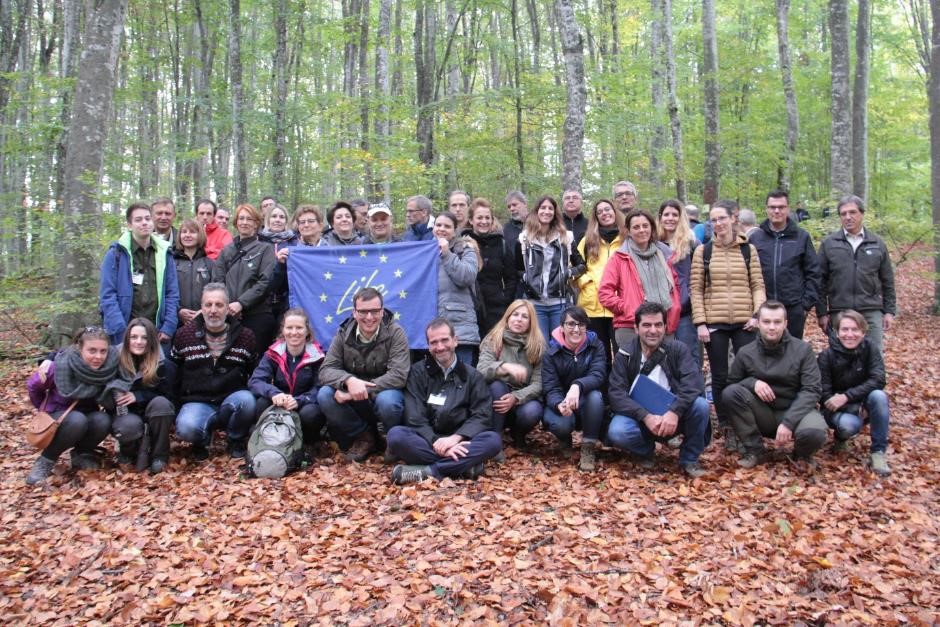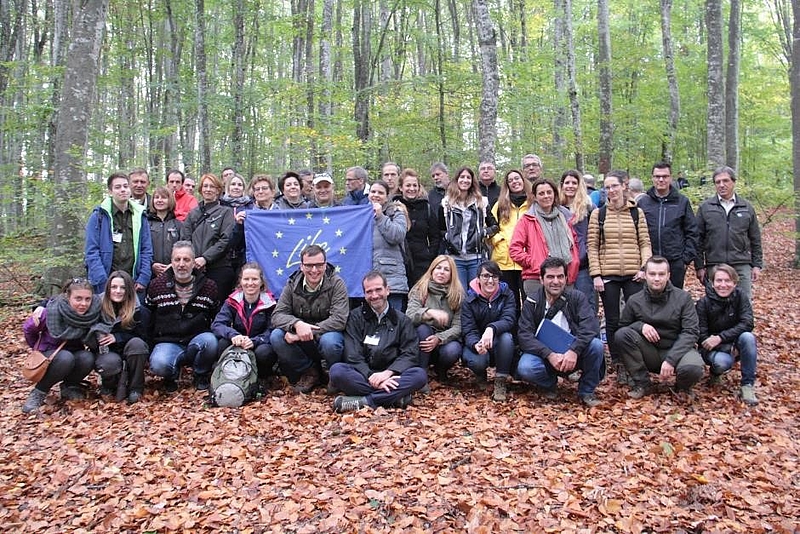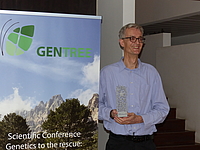A Stakeholders' event on forest genetic monitoring took place on 24 and 25 October 2017 in Thessaloniki (Greece) gathering more than 60 participants from 13 countries, including representatives of the Slovenian and Greek forest services, scientists from various European countries, students, and local and national authorities from Greece.
GenTree joined forces with the project LIFEGENMON to discuss scientific and practical aspects of forest genetic monitoring. The partnering project is an EU-funded initiative focused on developing guidelines for forest genetic monitoring. This entails the collection of information on the status and trends of genetic diversity in selected tree species and forest stands, according to a specific design and based on a set of indicators and verifiers.
The joint meeting was an occasion to establish a dialogue between scientists and forest practitioners and exchange views. The participants from the Greek and Slovenian forest services highlighted the greatest challenges they faced in piloting genetic monitoring protocols into practice. The group tackled some scientific and practical aspects related to the implementation of genetic monitoring and discussed solutions to develop protocols that are more feasible and less demanding in terms of observations and measurements.
The meeting participants had the opportunity to visit a pilot monitoring plot that was established in the frame of LIFEGENMON and was included among the sites selected for the experimental activities carried out within GenTree. The plot is located in a European beech (Fagus sylvatica) forest stand at Arnaia (Chalkidiki).
What next?
These are the main points to emerge from the meeting:
- Forest genetic monitoring (FGM) should work as an early warning tool applied within the framework of a conservation strategy for forest genetic resources, across the network of genetic conservation units (GCUs) in Europe.
- The monitoring protocol is at the research stage and will help anticipate threat factors for the forest ecosystems that cannot be detected early enough through standard observations.
- The questions about what indicators to use in forest genetic monitoring and how often indicators should be monitored are still open. Clarity about the scale (spatial and temporal) of adoption of forest genetic monitoring is necessary in order to select the appropriate set of indicators.
- The indicators need to be practical and should not require excessive investment of time and resources.
- It is necessary to continue an effective dialogue between scientists and policy-makers to explain the purposes of genetic monitoring. In addition, forest practitioners need training and capacity building to incorporate genetic monitoring among their tasks.
You can download the full report of the event below and see some photos here
The event was covered through national media:
- Green Agenda - environemental site
- Dasarxeio - main portal for applied forestry in Greece
- Aristotle University



